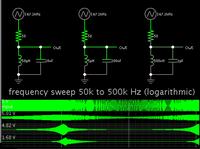kripacharya
Banned
The signal is buried in all sorts of noise. Impulse, gaussian, bangalore-chatter, other high strength signals close by etc etc. But the frequency is precisely known - well, within 5% at worst. I'm talking about frequencies in the range of .. oh.. 100Khz to 200Khz. SNR is most likely negative.....
How can I detect presence/ absence (that's all I need) of the signal with a high degree of certainty ? Some sort of correlation algorithm ? Notch filters ? FFT .... ?? Direct conversion + sharp LPF ?
How can I detect presence/ absence (that's all I need) of the signal with a high degree of certainty ? Some sort of correlation algorithm ? Notch filters ? FFT .... ?? Direct conversion + sharp LPF ?
Last edited:
